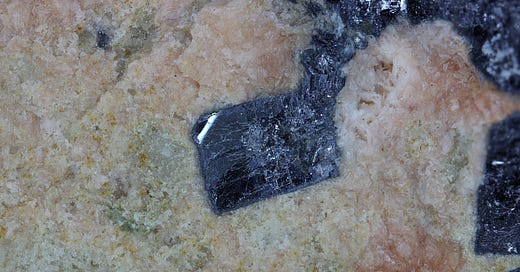Sometimes, you can tell the paragenesis in a specimen by what mineral species are on others. Paragenesis refers to the sequence in which different mineral species form and crystallise in a rock or mineral deposit. It describes the temporal and spatial relationships between minerals as they develop, often reflecting the changing chemical and physical conditions during the rock's formation.
Sometimes, it isn’t that apparent.
Mineralised specimens from Clevedon Beach in North Somerset, UK, occur in a barite matrix. Many crystallised species occur in cavities in the barite, including barite itself which forms bladed crystals.
In this specimen, nice sharp crystals of galena are “frozen” in the barite matrix. Given their distribution, it is unlikely that they formed before the barite. Equally unlikely is the barite forming before the galena given there is no space for it to grow into.
So the only conclusion, I think, is that they formed concurrently.
Anyone have an alternate explanation?
Below: Galena, Clevedon, North Somerset, England, UK. Width of view 6mm. Click on the image for a higher resolution version.





Your guess (simultaneously) sounds very approximately right. Fortunately we can live on without knowing everything!
I enjoy your posts - what few I’ve found time to read.
Yes, same time I’d say. Very interesting location.